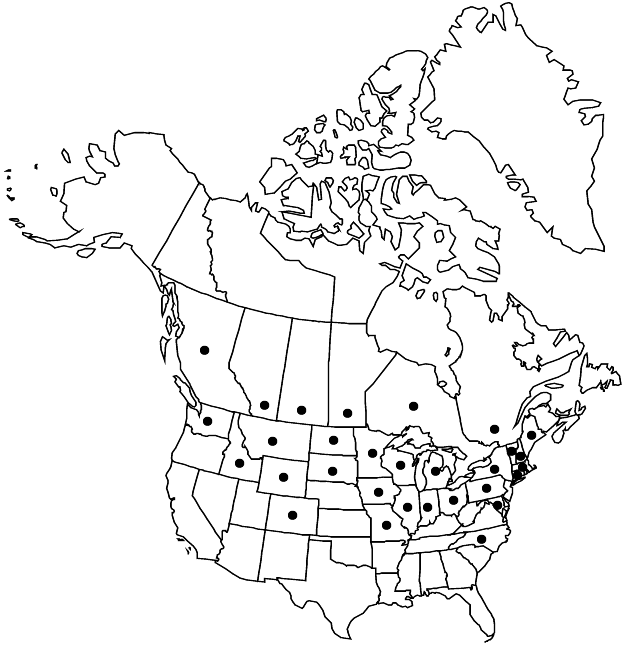Silene csereii
Enum. Stirp. Transsilv. 3: 345. 1816.
Plants annual or biennial, glabrous and somewhat glaucous; tap-root stout. Stems erect, sparingly branched below inflorescence, robust, to 65 cm. Leaves: basal few, usually withering by time of anthesis, blade spatulate; cauline numerous, 2 per node, blade 1-veined, ovate-lanceolate to oblanceolate, 3–7 cm × 7–30 mm, margins entire, apex acute. Inflorescences many-flowered, open, bracteate; primary branches racemose, elongate, with sessile or shortly pedunculate cymes of 1–6 flowers per node; bracts narrowly lanceolate, 3–12 mm, hyaline-margined, apex acute. Pedicels ascending, ± straight, 1–2 times calyx, broadening at calyx base. Flowers: calyx often obscurely ca. 20-veined, elliptic, abruptly contracted at base, opening constricted to 1/2 its diam., slightly inflated in flower, 7–10 × 3–4 mm, in fruit tightly enveloping capsule, ovoid, thin, enlarging to 9–13 × 5–7 mm, herbaceous, margins narrow, membranous, dentate with broadly triangular lobes to 1 mm, glabrous, veins obscure, usually purple tinged, without conspicuous, pale commissures, longitudinal, parallel, not obviously reticulate; petals white, clawed, claw equaling calyx, limb deeply 2-fid into 2 spatulate lobes, to 5 mm, appendages ca. 0.5 mm; stamens exserted, to 2 times length of calyx; filaments usually dark purple; stigmas 3, exserted, to 2 times length of calyx. Capsules ovoid, equaling calyx and sometimes splitting it, opening by 6 recurved, narrowly lanceolate teeth; carpophore ca. 1 mm. Seeds grayish brown, plump, broadly reniform, 0.6–1 mm, with concentric rings of papillae; papillae slightly longer than broad. 2n = 24.
Phenology: Flowering summer.
Habitat: Cultivated fields, roadsides, waste land
Elevation: 0-1600 m
Distribution

Introduced; Alta., B.C., Man., Ont., Que., Sask., Colo., Conn., Idaho, Ill., Ind., Iowa, Maine, Md., Mass., Mich., Minn., Mo., Mont., N.H., N.Y., N.C., N.Dak., Ohio, Pa., S.Dak., Vt., Wash., Wis., Wyo., Europe.
Discussion
Often confused with Silene vulgaris, S. csereii may be readily separated by the long, racemose primary branches of its inflorescence, the elliptic calyx that is constricted at both ends, tightly enclosing the capsule and lacking obvious reticulate venation, and the purple filaments.
Selected References
None.